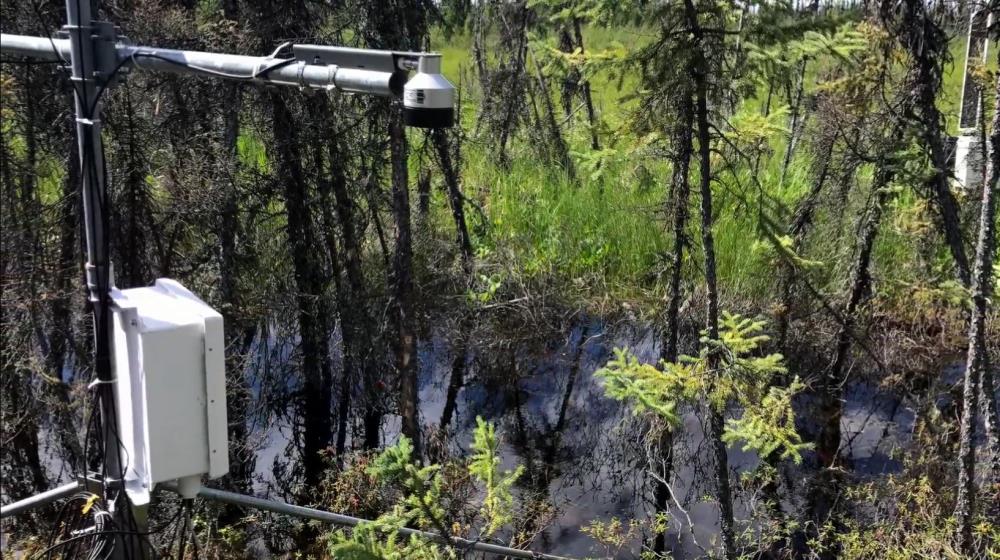
Related items loading ...
Section 1: Publication
Publication Type
Thesis
Authorship
Groff, Terava
Title
A Field Examination of Snowmelt Infiltration into Sloping Frozen Soils in the Canadian Rockies
Year
2024
Publication Outlet
USASK Harvest - Theses and Dissertations
DOI
ISBN
ISSN
Citation
Groff, Terava (2024) A Field Examination of Snowmelt Infiltration into Sloping Frozen Soils in the Canadian Rockies, USASK Harvest - Theses and Dissertations,
https://hdl.handle.net/10388/15973
Abstract
There is little research on infiltration into seasonally frozen soils on mountain hillslopes and few evaluations of infiltration model performance in this environment exist. As a result, the application of existing infiltration estimation methods developed in level environments is uncertain for estimating spring runoff in mountain basins. A field study was conducted in the Canadian Rockies using eight years of snowpack, liquid soil moisture and temperature profile observations from steep north-facing and south-facing hillslopes. Seasonal infiltration depths and initial soil saturation were estimated with the help of soil freezing characteristic curves, soil texture and timeseries of volumetric water content and soil temperature. Infiltration was found to primarily follow the limited case postulated by Popov (1972), with only one year, at one site, undergoing unlimited infiltration where all meltwater infiltrated. Restricted infiltration did not occur, despite ice layers under the snowpack, which can impede water entry to soils. Infiltration was estimated using an equation for the limited case developed from extensive observations of seasonal infiltration, initial soil saturation and peak SWE in Canadian prairie agricultural fields (Gray et al., 1985b). Whilst this equation accurately estimated infiltration depths, it was unsuitable for application at the study site due to a statistical association between its driving variables. Initial soil saturation did not have a statistically significant influence on infiltration depths at these sites and so a simpler single-variable infiltration equation to estimate infiltration depths based on peak SWE was developed using linear regression and was found to have good predictive capability. Alternative approaches using modelled cumulative melt or infiltration opportunity time to estimate infiltration depths also had good predictability. Runoff depths estimated from a water balance assuming negligible evaporation and sub-surface drainage were reliably predicted using peak SWE or cumulative melt depths by single-variable infiltration equations in the absence of soil moisture, texture, aspect, or slope information. The results provide insights into how snowmelt runoff on hillslopes may be estimated from snowpack accumulation information that has been observed in cold region mountains, despite the complexity of hillslope hydrology and frozen soil infiltration processes.
Plain Language Summary


 GWFNet
GWFNet Master
Master Data
Data Research
Research Map
Map
 Advanced
Advanced Tools
Tools
 . . .
. . .
 Metadata Editor
Metadata Editor
 Record List
Record List
 Alias List Editor
Alias List Editor
 Legacy sites
Legacy sites